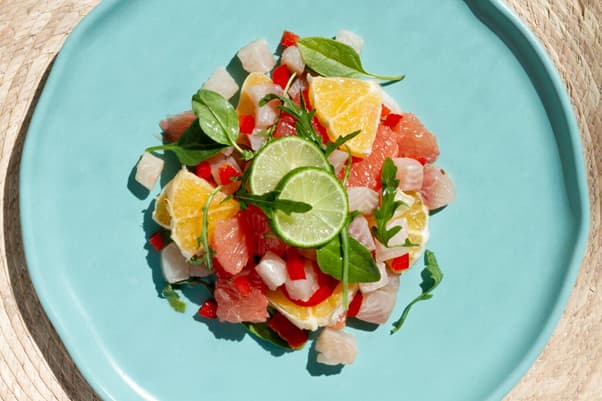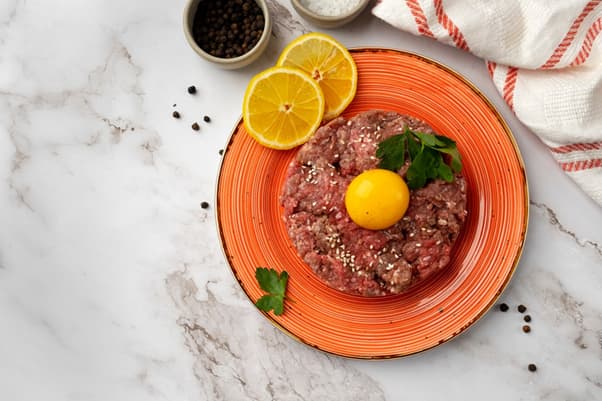Raw foods have captivated humanity since ancient times, evolving into sophisticated culinary traditions that highlight purity, freshness, and flavor. Beyond familiar dishes like sushi or ceviche, eating raw represents a fascinating gastronomic philosophy, honoring ingredients in their purest state. Let’s delve deeper into the gourmet art of raw cuisine and uncover some rare, extraordinary delicacies cherished globally.
Exploring Raw Culinary Traditions
Across various cultures, raw dishes are more than just food; they’re a culinary art form expressing respect for ingredients and their natural taste profiles. For instance, the Mediterranean tradition embraces raw seafood dishes that emphasize freshness. The Italian “Crudo,” thinly sliced fresh fish marinated lightly with olive oil, sea salt, and citrus zest, showcases this perfectly. The simplicity of Crudo highlights the ocean’s natural flavors, celebrating the ingredient rather than masking it.
In Ethiopia, “Kitfo” has long been cherished as a delicacy. Finely minced raw beef seasoned with mitmita (a spicy chili powder) and clarified butter, Kitfo is a celebratory dish, typically enjoyed during festivals or special occasions. The Ethiopian tradition emphasizes communal dining, reflecting social bonds and shared experiences through raw gastronomy.
Moving to Southeast Asia, raw food preparations often involve fermentation, elevating flavor profiles while ensuring safety. Take Thailand’s “Koi Pla”—a raw fish salad seasoned heavily with lime, chili, herbs, and fermented fish sauce. The acidity and fermentation neutralize potential bacteria, making it a delicious yet safe delicacy that showcases traditional ingenuity in raw cuisine.
Japan’s culinary landscape also goes far beyond the ubiquitous sushi and sashimi. “Basashi,” or raw horse meat served thinly sliced with soy sauce, ginger, and garlic, is a highly valued delicacy in certain regions, especially Kumamoto. This dish exemplifies Japanese culinary principles, balancing simplicity, elegance, and respect for the ingredient.
Beyond Sushi: Lesser-Known Raw Delicacies
Although sushi and sashimi have popularized raw food globally, several lesser-known dishes deserve equal attention. In Korea, “Yukhoe” stands out distinctly. Prepared with high-quality raw beef cut into thin strips, it’s mixed with garlic, sesame oil, and soy sauce, then garnished with egg yolk and fresh Asian pear slices. Yukhoe embodies Korean culinary philosophy—balance, harmony, and vibrant taste.
In the far north, the Inuit communities traditionally rely on raw foods for survival. “Igunaq,” for example, consists of raw walrus or seal meat fermented naturally underground. This unique delicacy demonstrates an ingenious preservation method, creating flavors robust enough to sustain through harsh winters. While initially challenging to outsiders, Igunaq offers profound insight into indigenous food practices and survival wisdom.
Meanwhile, Latin America offers a vibrant spectrum of raw culinary delights beyond ceviche. Peru’s lesser-known “Tiradito” combines sashimi-inspired techniques with local ingredients like ají amarillo pepper. Unlike ceviche, Tiradito omits onions and emphasizes thin slicing, drizzled lightly with sauces blending citrus juices and chili peppers. This nuanced approach accentuates ingredient freshness and offers a refined raw-eating experience.
In Northern Europe, raw food traditions can also be discovered in dishes like “Gravlax,” Scandinavian cured salmon traditionally seasoned with dill, salt, and sugar. Though cured rather than entirely raw, Gravlax retains its freshness and delicate texture, bridging the gap between fully raw and lightly preserved delicacies.
Safely Savoring Raw Foods

While the allure of raw delicacies is undeniable, safety remains paramount. Experienced raw-food chefs and connoisseurs consistently follow stringent practices to mitigate risks. Here are expert tips to safely enjoy raw foods:
- Always source high-quality, sushi-grade seafood and prime meats.
- Prioritize reputable suppliers who adhere strictly to hygiene standards.
- Consume raw dishes freshly prepared to avoid bacterial growth.
- If preparing at home, maintain meticulous kitchen cleanliness.
- Pair raw dishes with acidic marinades like citrus or vinegar to enhance safety.
Appreciating the Raw Experience
Eating raw is more than a culinary preference; it’s an immersive sensory experience connecting diners intimately to food origins. Raw cuisine demands exceptional quality and freshness, making ingredient sourcing a crucial, almost sacred step in preparation. Every bite of raw food brings heightened awareness to texture, subtlety of taste, and the inherent qualities of the ingredient itself.
Embracing raw culinary traditions can profoundly enhance your appreciation of food, encouraging a deeper, mindful relationship with what we consume. Whether savoring raw beef in Korea, delighting in Mediterranean seafood, or tasting fermented delicacies of the Inuit, each raw food experience invites us to reconnect with our culinary roots and rediscover the joy and purity inherent in uncooked ingredients.
In the vast landscape of global gastronomy, raw foods remain a powerful testament to humanity’s creativity, adaptability, and relentless pursuit of flavor. Through this delicate culinary art form, cultures worldwide continue to celebrate food in its most authentic, untouched, and beautifully raw form, ensuring a rich legacy of culinary exploration for generations to come.



